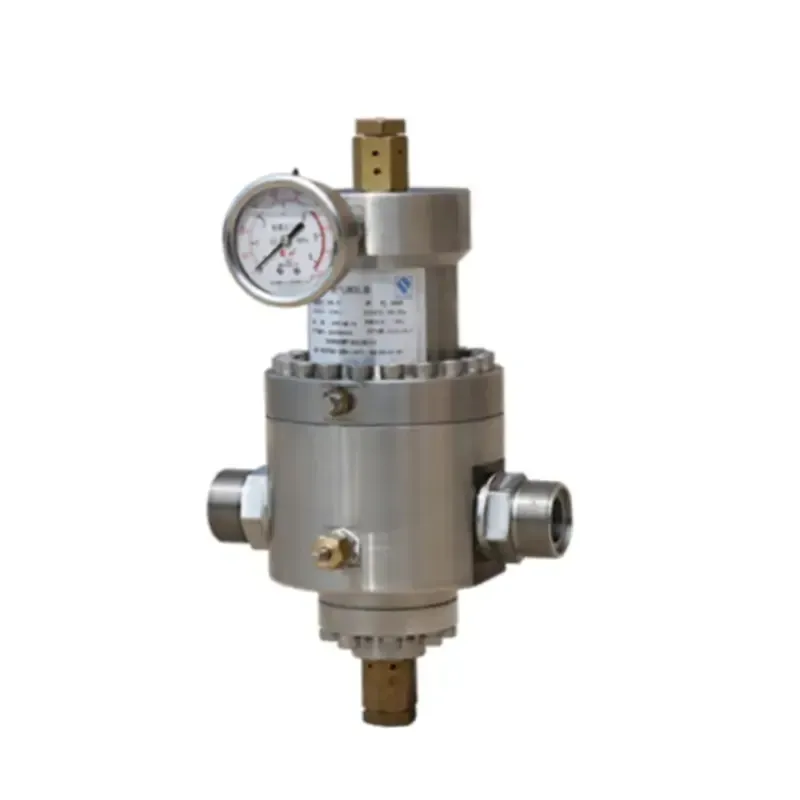
Oct . 13, 2024 15:35
Back to list
Understanding the Functionality and Importance of Shut-Off Valves in Piping Systems
Understanding Shut-Off Valves Essential Components in Fluid Control
Shut-off valves are critical components in various industrial and residential applications, primarily designed to manage the flow of liquids and gases within a piping system. These valves function by either completely allowing or completely stopping the flow, making them integral to safety, efficiency, and control in fluid-handling systems.
What is a Shut-Off Valve?
A shut-off valve is a device that regulates the flow of fluids by opening, closing, or partially obstructing passageways. They are versatile and can be found in applications ranging from water supply systems in homes to complex industrial operations involving hazardous materials. The operation mechanism typically involves a quarter-turn or linear motion, depending on the valve type, permitting operators to manage flow effectively.
Types of Shut-Off Valves
There are several types of shut-off valves commonly used in various applications
1. Gate Valves These are used primarily for on/off applications. They provide minimal pressure drop and are typically used in large pipelines.
2. Ball Valves Featuring a spherical disc, ball valves allow or block flow with a simple quarter-turn. They are preferred for their durability and reliability.
3. Globe Valves These valves are designed for throttling purposes, allowing for the regulation of flow in addition to simple shut-off.
shut-off valve

5. Butterfly Valves These are used for larger pipes, where a disc rotates to either allow or block fluid flow. They are lightweight and offer rapid operation.
Importance of Shut-Off Valves
Shut-off valves play a crucial role in ensuring the safety and efficiency of fluid transportation systems. Their primary function is to control the flow, which can prevent catastrophic failures in the case of leaks or bursts. In industrial settings, a malfunctioning shut-off valve can lead to hazardous spills, resulting in financial loss and environmental damage. In residential systems, these valves help manage water supply, enabling homeowners to isolate sections of plumbing for repairs without shutting off the entire system.
Applications of Shut-Off Valves
Shut-off valves are used in a myriad of applications. In residential settings, they're found in water supply lines, gas lines, and heating systems. In industrial environments, they are employed in chemical processing, oil and gas transportation, and water treatment facilities. Their resilience allows them to perform in extreme conditions, whether that involves high pressures or corrosive environments.
Maintenance and Considerations
Maintaining shut-off valves is essential for ensuring their longevity and functionality. Regular inspections can help identify wear and tear and prevent unexpected failures. Operators should ensure that the valves are exercised periodically; this helps avoid sticking, a common issue in valves that are seldom used.
When selecting a shut-off valve, one must consider various factors, including the fluid type, temperature, pressure ratings, and the specific requirements of the application. Each type of valve has its advantages and disadvantages, making it essential to choose the right one for the job.
Conclusion
Shut-off valves are indispensable tools in fluid control systems, ranging from simple household plumbing to complex industrial processes. Understanding their types, functions, and significance helps in both their selection and maintenance, contributing to the safety and efficiency of fluid management systems. As industries continue to evolve, the demand for reliable shut-off valves will remain paramount in ensuring operational integrity and safety.
Next:
Latest news
-
Safety Valve Spring-Loaded Design Overpressure ProtectionNewsJul.25,2025
-
Precision Voltage Regulator AC5 Accuracy Grade PerformanceNewsJul.25,2025
-
Natural Gas Pressure Regulating Skid Industrial Pipeline ApplicationsNewsJul.25,2025
-
Natural Gas Filter Stainless Steel Mesh Element DesignNewsJul.25,2025
-
Gas Pressure Regulator Valve Direct-Acting Spring-Loaded DesignNewsJul.25,2025
-
Decompression Equipment Multi-Stage Heat Exchange System DesignNewsJul.25,2025

